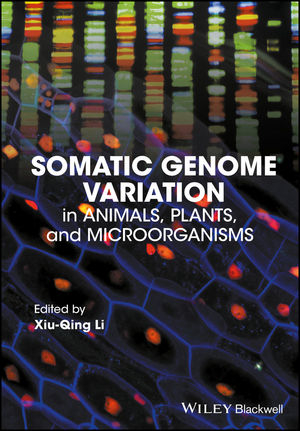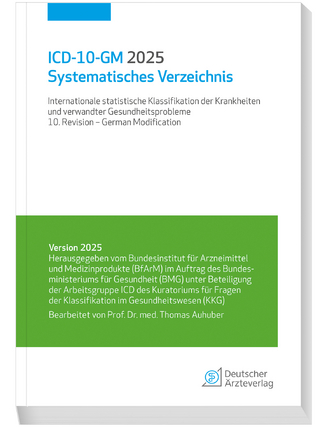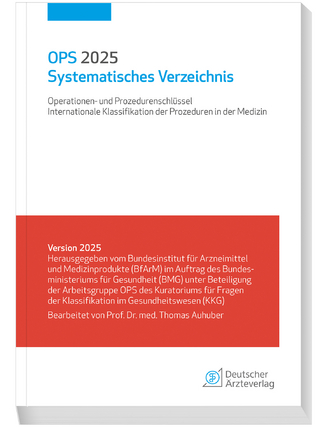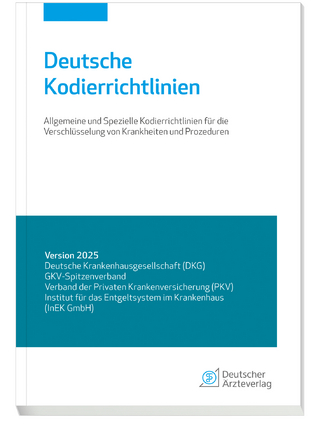
Somatic Genome Variation
Wiley-Blackwell (Verlag)
978-1-118-64706-6 (ISBN)
Written by an international team of experts, Somatic Genome Variation presents a timely summary of the latest understanding of somatic genome development and variation in plants, animals, and microorganisms. Wide-ranging in coverage, the authors provide an updated view of somatic genomes and genetic theories while also offering interpretations of somatic genome variation. The text provides geneticists, bioinformaticians, biologist, plant scientists, crop scientists, and microbiologists with a valuable overview of this fascinating field of research.
About the Editor Xiu-Qing Li, Doctorat d'État en Sciences (France), is a senior level Research Scientist of Molecular Genetics at Agriculture and Agri-Food Canada (Government of Canada). Dr. Li is also an Adjunct Professor at the University of New Brunswick and serves as an editor on PloS ONE, Genetics and Epigeneitcs, and the Potato Journal.
List of Contributors xv
Preface and Introduction xix
Acknowledgments xxi
About the Editor xxiii
Part I Somatic Genome Variation in Animals and Humans 1
1 Polyploidy in Animal Development and Disease 3
Jennifer L. Bandura and Norman Zielke
1.1 Introduction 3
1.2 Mechanisms Inducing Somatic Polyploidy 4
1.3 The Core Cell Cycle Machinery 8
1.4 Genomic Organization of Polyploid Cells 9
1.5 Endoreplication: An Effective Tool for Post-Mitotic Growth and Tissue Regeneration 10
1.6 Initiation of Endoreplication in Drosophila 11
1.7 Mechanisms of Endocycle Oscillations in Drosophila 15
1.8 Gene Amplification in Drosophila Follicle Cells 17
1.9 Endocycle Entry in the Trophoblast Lineage 19
1.10 Mechanisms of Endocycle Oscillations in Trophoblast Giant Cells 22
1.11 Cardiomyocytes 23
1.12 Hepatocytes 25
1.13 Megakaryocytes 28
1.14 Concluding Remarks 30
Acknowledgments 31
References 31
2 Large-Scale Programmed Genome Rearrangements in Vertebrates 45
Jeramiah J. Smith
2.1 Introduction 45
2.1 Hagfish 46
2.3 Sea Lamprey 48
2.4 Zebra Finch 48
2.5 Emerging Themes and Directions 49
References 51
3 Chromosome Instability in Stem Cells 55
Paola Rebuzzini, Maurizio Zuccotti, Carlo Alberto Redi and Silvia Garagna
3.1 Introduction 55
3.2 Pluripotent Stem Cells 56
3.3 Somatic Stem Cells 58
3.4 Mechanisms of Chromosomal Instability 59
3.5 Mechanisms of Chromosomal Instability in Stem Cells 63
References 63
Part II Somatic Genome Variation in Plants 75
4 Mechanisms of Induced Inheritable Genome Variation in Flax 77
Christopher A. Cullis
4.1 Introduction 77
4.2 Restructuring the Flax Genome 79
4.3 Specific Genomic Changes 80
4.4 What Happens When Plastic Plants Respond to Environmental Stresses? 83
4.5 When Do the Genomic Changes Occur and Are they Adaptive? 83
4.6 Is this Genomic Response of Flax Unique? 84
4.7 Concluding Remarks 87
Acknowledgments 87
References 87
5 Environmentally Induced Genome Instability and its Inheritance 91
Andrey Golubov
5.1 Introduction 91
5.2 Stress and its Effects on Genomes 92
5.3 Transgenerational Inheritance 96
5.4 Concluding Remarks 97
Acknowledgments 97
References 97
6 The Mitochondrial Genome, Genomic Shifting, and Genomic Conflict 103
Gregory G. Brown
6.1 Introduction 103
6.2 Heteroplasmy and Sublimons 105
6.3 Cytoplasmic Male Sterility (CMS) in Plants 108
6.4 Mitochondrial Sublimons and CMS 109
6.5 Restorer Gene Evolution: Somatic Genetic Changes Drive Nuclear Gene Diversity? 111
6.6 Concluding Remarks 112
References 113
7 Plastid Genome Stability and Repair 119
Éric Zampini, Sébastien Truche, Étienne Lepage, Samuel Tremblay]Belzile and Normand Brisson
7.1 Introduction 120
7.2 Characteristics of the Plastid Genome 121
7.3 Replication of Plastid DNA 124
7.4 Transcription in the Plastid 130
7.5 The Influence of Replication and Transcription on Plastid Genome Stability 131
7.6 Plastid Genome Stability and DNA Repair 133
7.7 Outcomes of DNA Rearrangements 145
7.8 Concluding Remarks 147
References 148
Part III Somatic Genome Variation in Microorganisms 165
8 RNA-Mediated Somatic Genome Rearrangement in Ciliates 167
John R. Bracht
8.1 Introduction 168
8.2 Ciliates: Ubiquitous Eukaryotic Microorganisms with a Long Scientific History 168
8.3 Two’s Company: Nuclear Dimorphism in Ciliates 170
8.4 Paramecium: Non-Mendelian Inheritance Comes to Light 171
8.5 Tetrahymena and the Origin of the scanRNA Model 173
8.6 Small RNAs in Stylonychia and Oxytricha 175
8.7 Long Noncoding RNA Templates in Genome Rearrangement 176
8.8 Long Noncoding RNA: An Interface for Short Noncoding RNA 177
8.9 Short RNA-Mediated Heterochromatin Formation and DNA Elimination 179
8.10 Transposable Elements and the Origins of Genome Rearrangements 182
8.11 Transposons, Phase Variation, and Programmed Genome Engineering in Bacteria 185
8.12 Transposases, Noncoding RNA, and Chromatin Modifications in VDJ Recombination of Vertebrates 186
8.13 Concluding Remarks: Ubiquitous Genome Variation, Transposons, and Noncoding RNA 187
Acknowledgments 187
References 187
9 Mitotic Genome Variations in Yeast and Other Fungi 199
Adrianna Skoneczna and Marek Skoneczny
9.1 Introduction 199
9.2 The Replication Process as a Possible Source of Genome Instability 200
9.3 Post-Replicative Repair (PRR) or Homologous Recombination (HR) Are Responsible for Error-Free and Error-Prone Repair of Blocking Lesions and Replication Stall-Borne Problems 219
9.4 Ploidy Maintenance and Chromosome Integrity Mechanisms 229
9.5 Concluding Remarks 234
References 235
Part IV General Genome Biology 251
10 Genome Variation in Archaeans, Bacteria, and Asexually Reproducing Eukaryotes 253
Xiu-Qing Li
10.1 Introduction 254
10.2 Chromosome Number in Prokaryote Species 254
10.3 Genome Size Variation in Archaeans and Bacteria 255
10.4 Archaeal and Bacterial Genome Size Distribution 256
10.5 Genomic GC Content in Archaeans, Bacteria, Fungi, Protists, Plants, and Animals 257
10.6 Correlation between GC Content and Genome or Chromosome Size 259
10.7 Genome Size and GC-Content Variation in Primarily Asexually Reproducing Fungi 260
10.8 Variation of Gene Direction 263
10.9 Concluding Remarks 263
Acknowledgments 264
References 264
11 RNA Polyadenylation Site Regions: Highly Similar in Base Composition Pattern but Diverse in Sequence—A Combination Ensuring Similar Function but Avoiding Repetitive-Regions-Related Genomic Instability 267
Xiu-Qing Li and Donglei Du
11.1 General Introduction to Gene Number, Direction, and RNA Polyadenylation 268
11.2 Base Selection at the Poly(A) Tail Starting Position 269
11.3 Most Frequent Upstream Motifs in Microorganisms, Plants, and Animals 271
11.4 Motif Frequencies in the Whole Genome 273
11.5 The Top 20 Hexamer Motifs in the Poly(A) Site Region in Humans 273
11.6 Polyadenylation Signal Motif Distribution 273
11.7 Alternative Polyadenylation 275
11.8 Base Composition of 3′UTR in Plants and Animals 276
11.9 Base Composition Comparison between 3′UTR and Whole Genome 276
11.10 Base Composition of 3′COR in Plants and Animals 277
11.11 Base Composition Pattern of the Poly(A) Site Region in Protists 278
11.12 Base Composition Pattern of the Poly(A) Site Region in Plants 280
11.13 Base Composition Pattern of the Poly(A) Site Region in Animals 280
11.14 Comparison of Poly(A) Site Region Base Composition Patterns in Plants and Animals 280
11.15 Common U-A-U-A-U Base Abundance Pattern in the Poly(A) Site Region in Fungi, Plants, and Animals 284
11.16 Difference between the Most Frequent Motifs and Seqlogo-Showed Most Frequent Bases 284
11.17 RNA Structure of the Poly(A) Site Region 286
11.18 Low Conservation in the Overall Nucleotide Sequence of the Poly(A) Site Region 286
11.19 Poly(A) Site Region Stability and Somatic Genome Variation 286
11.20 Concluding Remarks 287
Acknowledgments 288
References 288
12 Insulin Signaling Pathways in Humans and Plants 291
Xiu]Qing Li and Tim Xing
12.1 Introduction 291
12.2 Ranking of the Insulin Signaling Pathway and its Key Proteins 293
12.3 Diseases Caused by Somatic Mutations of the PI3K, PTEN, and AKT Proteins in the Insulin Signaling Pathway 293
12.4 Plant Insulin and Medical Use 295
12.5 Role of the Insulin Signaling Pathway in Regulating Plant Growth 295
12.6 Concluding Remarks 295
References 296
13 Developmental Variation in the Nuclear Genome Primary Sequence 299
Xiu-Qing Li
13.1 Introduction 299
13.2 Genetic Mutation, DNA Damage and Protection, and Gene Conversion in Somatic Cells 300
13.3 Programmed Large-Scale Variation in Primary DNA Sequences in Somatic Nuclear Genome 302
13.4 Generation of Antibody Genes in Animals through Somatic Genome Variation 303
13.5 Developmental Variation in Primary DNA Sequences in the Somatic Cells of Plants 303
13.6 Heritability and Stability of Developmentally Induced Variation in the Somatic Nuclear Genome in Plants 303
13.7 Concluding Remarks 304
References 305
14 Ploidy Variation of the Nuclear, Chloroplast, and Mitochondrial Genomes in Somatic Cells 309
Xiu]Qing Li, Benoit Bizimungu, Guodong Zhang and Huaijun Si
14.1 Introduction 310
14.2 Nuclear Genome in Somatic Cells 311
14.3 Plastid Genome Variation in Somatic Cells 317
14.4 Mitochondrial Genome in Somatic Cells 320
14.5 Organelle Genomes in Somatic Hybrids 324
14.6 Effects of Nuclear Genome Ploidy on Organelle Genomes 325
14.7 Concluding Remarks 326
Acknowledgments 326
References 326
15 Molecular Mechanisms of Somatic Genome Variation 337
Xiu-Qing Li
15.1 Introduction 338
15.2 Mutation of Genes Involved in the Cell Cycle, Cell Division, or Centromere Function 338
15.3 DNA Damage 338
15.4 Variation in Induction and Activity of Radical-Scavenging Enzymes 339
15.5 DNA Cytosine Deaminases 340
15.6 Variation in Protective Roles of Pigments against Oxidative Damage 340
15.7 RNA-Templated DNA Repair 341
15.8 Errors in DNA Repair 341
15.9 RNA-Mediated Somatic Genome Rearrangement 342
15.10 Repetitive DNA Instability 342
15.11 Extracellular DNA 343
15.12 DNA Transposition 343
15.13 Somatic Crossover and Gene Conversion 343
15.14 Molecular Heterosis 344
15.15 Genome Damage Induced by Endoplasmic Reticulum Stress 344
15.16 Telomere Degeneration 344
15.17 Concluding Remarks 344
References 345
16 Hypotheses for Interpreting Somatic Genome Variation 351
Xiu-Qing Li
16.1 Introduction 352
16.2 Cell-Specific Accumulation of Somatic Genome Variation in Somatic Cells 352
16.3 Developmental Age and Genomic Network of Reproductive Cells 353
16.4 Genome Generation Cycle of Species 353
16.5 Somatic Genome Variation and Tissue-Specific Requirements during Growth or Development 354
16.6 Costs and Benefits of Somatic Genome Variation 354
16.7 Hypothesis on the Existence of a Primitive Stage in both Animals and Plants 355
16.8 Sources of Genetic Variation from in Vitro Culture Propagation 357
16.9 Hypothesis that Heterosis Is Created by Somatic Genome Variation 357
16.10 Genome Stability through Structural Similarity and Sequence Dissimilarity 358
16.11 Hypothesis Interpreting the Maternal Transmission of Organelles 358
16.12 Ability of Humans to Deal with Somatic Genome Variation and Diseases 359
16.13 Concluding Remarks 360
References 360
17 Impacts of Somatic Genome Variation on Genetic Theories and Breeding Concepts, and the Distinction between Mendelian Genetic Variation, Somagenetic Variation, and Epigenetic Variation 363
Xiu]Qing Li
17.1 Introduction 364
17.2 The Term ‘Somatic Genome’ 365
17.3 Mendelian Genetic Variation, Epigenetic Variation, and Somagenetic Variation 365
17.4 What Is a Gene? 367
17.5 Breeding Criteria, Genome Cycle, Pure Lines, and Variety Stability 368
17.6 The Weismann Barrier Hypothesis and the Need for Revision 370
17.7 Implications for Species Evolution 370
17.8 Concluding Remarks 371
References 372
18 Somatic Genome Variation: What it Is and What it Means for Agriculture and Human Health 377
Xiu-Qing Li
18.1 Introduction 378
18.2 Natural Attributes of Somatic Genome Variation 378
18.3 Implications of Somatic Genome Variation for Human and Animal Health 380
18.4 Implications of Somatic Genome Variation for Agriculture 385
18.5 Concluding Remarks 391
Acknowledgments 392
References 392
Index 405
| Verlagsort | Hoboken |
|---|---|
| Sprache | englisch |
| Maße | 168 x 246 mm |
| Gewicht | 1066 g |
| Themenwelt | Informatik ► Weitere Themen ► Bioinformatik |
| Medizin / Pharmazie ► Medizinische Fachgebiete | |
| Naturwissenschaften ► Biologie ► Genetik / Molekularbiologie | |
| ISBN-10 | 1-118-64706-8 / 1118647068 |
| ISBN-13 | 978-1-118-64706-6 / 9781118647066 |
| Zustand | Neuware |
| Informationen gemäß Produktsicherheitsverordnung (GPSR) | |
| Haben Sie eine Frage zum Produkt? |
aus dem Bereich


